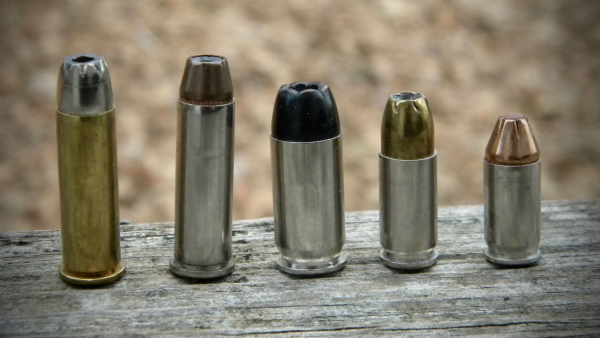Today, as in the past, there is some debate -- sometimes heated argument -- on what caliber is suitable for self-defense. In the past, the biggest divide was between fans of the 9mm and .45 ACP. Now, there are other entries including the .380 ACP and the .40 caliber, plus a few other not-so-common rounds. But, with the advances in ammunition design, along with improved performance, is there even a need for argument?

It wasn’t that long ago when all pistol calibers left a lot to be desired when fired into meat and bone. A big reason for this is that almost everyone, including law enforcement, were using ball, full metal jacketed ammunition. (Sometimes a lead round nose or wadcutter bullet.) FMJ ammunition punches through people, without expanding and dumping its energy into the body. Although some departments were progressive in shifting to hollow-point defensive ammunition, it took until the mid to late 1990’s that some larger law enforcement agencies started using these rounds.
Before the development of “new” ammunition a lot of good calibers got a bad reputation. This includes the .380 ACP, .38 Special, the 9mm and even the .30 Carbine round. Since then, and especially in the last fifteen years, there have been incredible advances in ammunition design and the materials used in its construction. Velocity has increased, and the bullet’s construction allowed them to expand. These rounds seem more effective at stopping the threat. (Just keep in mind that with handgun rounds it’s still likely going to take multiple shots to end the fight.) Even the .380 ACP, which many considered an unsuitable defensive round – “puny” was often used – is today an excellent performer for defense. This is great, especially considering that it is available in a variety of platforms, and smaller size pistols are easier to conceal.
For some, their choice in caliber may be limited by what they can physically control or handle. Smaller calibers are better for them. Companies like Smith & Wesson have introduced pistols like the M&P “EZ” pistols with reduced spring pressures on the slide, making them easy to cycle and manipulate. “What about,” you ask, “the .22 Long Rifle?” It wouldn’t be my first choice for a defensive pistol, but if you look up the information, you’ll discover that this tiny caliber has a history of severely injuring and killing many people.
Most bad guys are just like us; they do not want to get shot with anything, regardless of caliber. Research in self-defense shootings has shown that from .380 to .45 ACP seem to average about three to four rounds to stop the confrontation. (Magnum rounds like .357 and larger normally perform a little better.) Efficiently stopping the threat depends more on what you do, and how well you perform -- as opposed to which caliber you chose. Or, for that matter, your gun’s magazine capacity – but that’s a discussion for another time.
Sometimes, “friends” may give you grief about your choice of pistol and caliber. Don’t let that bother you. Training, and practicing regularly will ensure when the time comes, you’ll be ready. There are much better things to debate that caliber choice … like semi-auto vs. revolver.
Tiger McKee is director of Shootrite Firearms Academy. He is the author of The Book of Two Guns, AR-15 Skills and Drills, has a regular column in American Handgunner and makes some cool knives and custom revolvers. www.shootrite.org or visit Shootrite’s Facebook page for other details.